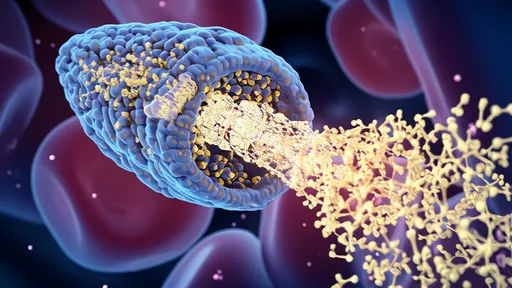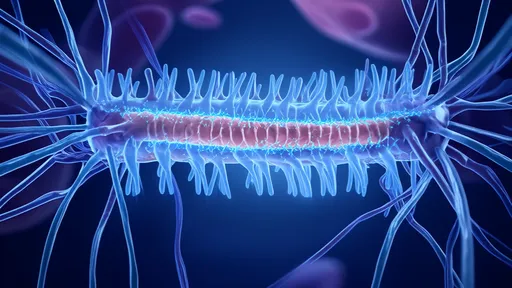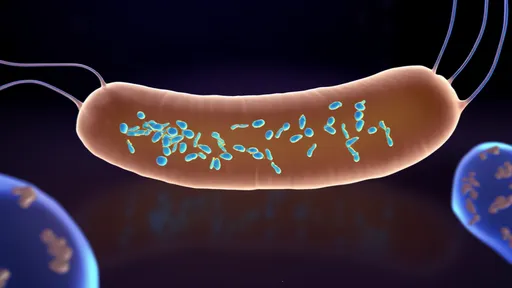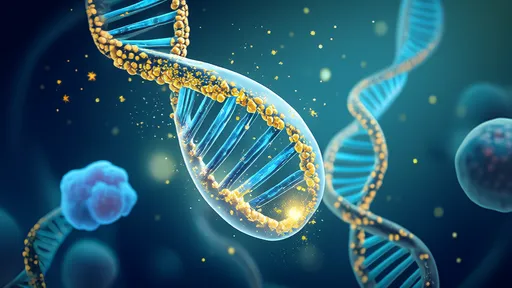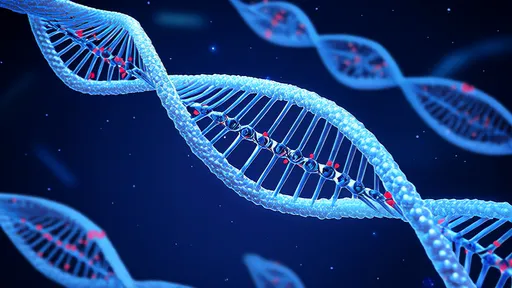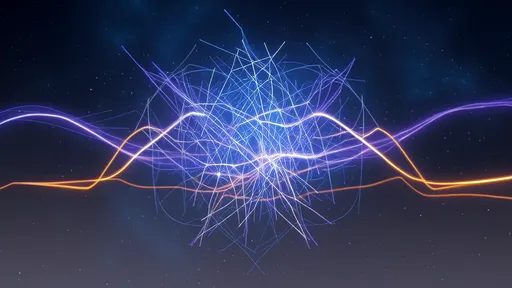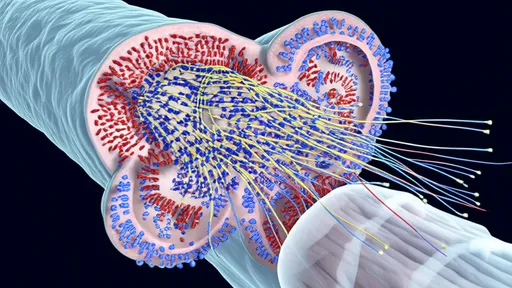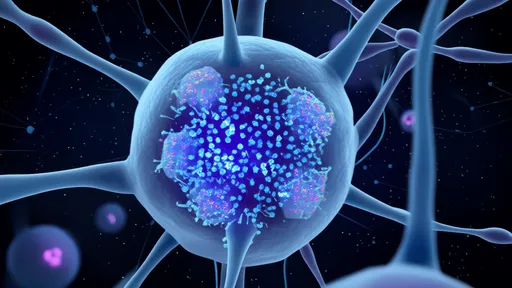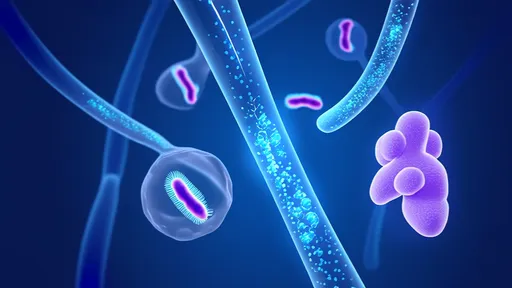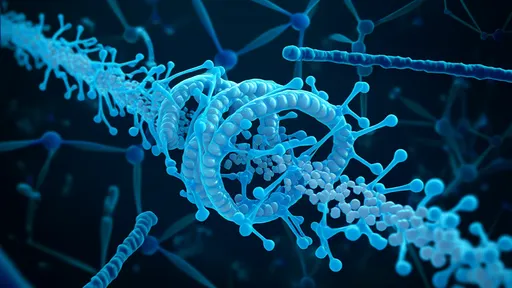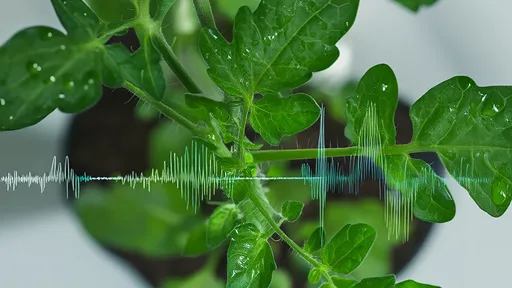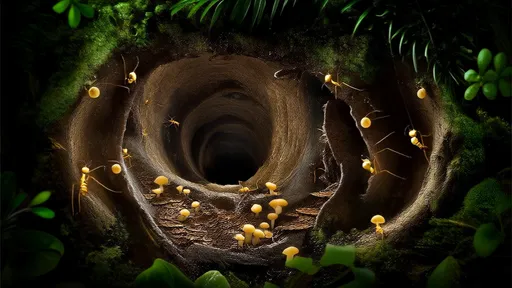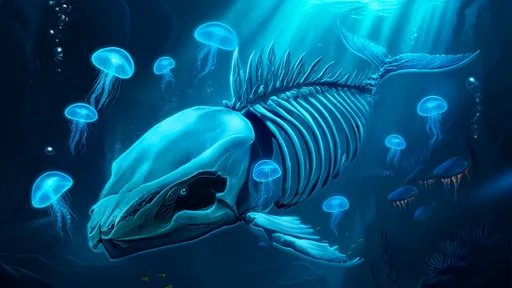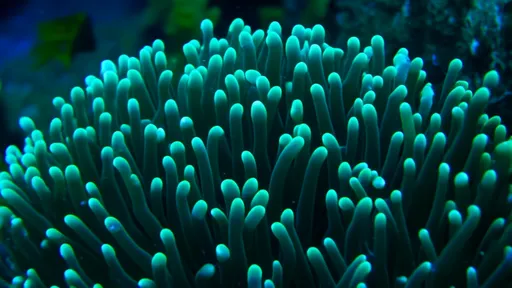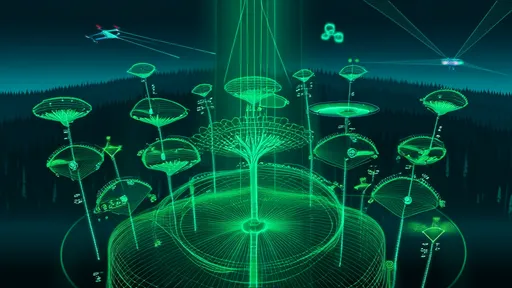In a groundbreaking discovery that bridges molecular biology and neuroscience, researchers have uncovered how the CPEB protein acts as a "molecular glue" to solidify long-term memories through an elegant phase transition mechanism. This finding not only revolutionizes our understanding of memory persistence but also reveals nature's ingenious solution to maintaining information at the molecular level.
The study, published in a leading scientific journal, demonstrates how neurons employ the principles of protein phase separation – a process similar to how oil droplets form in water – to create stable memory engrams. At the heart of this process lies the CPEB protein, which undergoes a remarkable transformation from individual molecules into gel-like aggregates that maintain synaptic connections for months or even years.
What makes this discovery particularly fascinating is how it challenges conventional wisdom about memory storage. For decades, scientists believed that memories were maintained through continuous molecular turnover or persistent electrical activity. The phase transition model presents a radically different paradigm where memories become physically embedded in the architecture of neural circuits through these protein aggregates.
The research team used advanced microscopy techniques to observe CPEB proteins in action within the synapses of neurons. They found that when memories form, specific neuronal stimulation triggers CPEB molecules to change their conformation and begin clustering together. These clusters then recruit other proteins and RNA molecules, effectively creating a self-sustaining molecular complex that preserves the synaptic changes underlying memory.
This mechanism explains several puzzling aspects of memory biology, including how memories can persist despite the constant turnover of proteins in neurons. The CPEB aggregates appear to act as a sort of molecular template that can reconstitute itself even as individual components are replaced. This provides both stability and flexibility to the memory storage system.
Interestingly, the phase transition process appears reversible under certain conditions, potentially explaining how some memories can fade or be modified over time. The researchers speculate that different emotional states or patterns of neural activity might influence whether the CPEB aggregates remain stable or dissolve, offering new insights into memory malleability.
The implications of this discovery extend far beyond basic neuroscience. Understanding how CPEB proteins maintain their aggregated state could lead to new treatments for memory disorders. In Alzheimer's disease, for example, the normal process of protein aggregation goes awry; comparing pathological aggregates with functional CPEB aggregates might reveal therapeutic targets.
From an evolutionary perspective, the use of phase transitions for memory storage represents a brilliant biological hack. It allows neurons to maintain information without requiring constant energy expenditure, an important consideration for an organ as metabolically demanding as the brain. This may explain how even simple organisms with limited nervous systems can form lasting memories.
The research also raises intriguing questions about the physical nature of memory. If memories are indeed stored as specific protein configurations, does this mean they have a particular shape or structure? Could there be a direct mapping between the spatial arrangement of these aggregates and the information they encode? These questions will undoubtedly guide future research in molecular neuroscience.
As scientists continue to unravel the mysteries of CPEB and other memory-related proteins, we're gaining unprecedented insight into one of humanity's oldest questions: how our experiences become part of our biological fabric. The phase transition model provides a satisfying explanation that connects molecular events with cognitive phenomena, bridging the gap between biology and psychology.
This discovery also highlights the importance of interdisciplinary research in modern science. The breakthrough came from combining techniques from cell biology, physical chemistry, and neuroscience – a reminder that some of nature's most profound secrets lie at the boundaries between traditional disciplines.
Looking ahead, researchers aim to investigate whether similar phase transition mechanisms operate in other aspects of cognition beyond memory. Could attention, decision-making, or even consciousness itself involve comparable molecular processes? The CPEB story suggests we may be on the verge of a new era in understanding the physical basis of mental phenomena.
For now, the image of CPEB proteins gluing together the molecular components of memory stands as a powerful metaphor for how biology achieves persistence in an ever-changing cellular environment. It's a reminder that sometimes, the most sophisticated solutions in nature are also the most elegant.
For decades, the blood-brain barrier (BBB) has stood as a formidable gatekeeper, selectively shielding the brain from harmful substances while frustrating efforts to deliver life-saving therapeutics. This biological fortress, while essential for protecting our most vital organ, has rendered many promising treatments for neurological disorders ineffective. Now, a groundbreaking approach combining protein engineering and artificial intelligence is cracking the code to safe BBB penetration, potentially revolutionizing treatment for Alzheimer's, Parkinson's, and brain cancers.
In a groundbreaking development that could revolutionize the treatment of spinal cord injuries, researchers have successfully engineered hydrogel-based optical fibers capable of mimicking neural pathways. These "neural optical fibers" represent a fusion of advanced materials science and neurobiology, offering new hope for patients with previously untreatable damage to their central nervous system.
In a groundbreaking discovery that could revolutionize our approach to plastic waste, scientists have identified a surprising ally in the fight against polyethylene pollution: the humble wax worm. More specifically, the bacteria residing in the gut of these caterpillar-like creatures have demonstrated an extraordinary ability to break down one of the world's most stubborn plastics. This finding opens new avenues for tackling the global plastic crisis through biological means.
In a groundbreaking development that challenges our understanding of aging, scientists have demonstrated the potential to reverse cellular aging through a technique called transient reprogramming. This approach temporarily rewinds the epigenetic "clock" of cells without erasing their identity, opening new possibilities for regenerative medicine and age-related disease treatment.
In a groundbreaking leap for precision medicine, researchers have unveiled a light-controlled CRISPR delivery system using DNA-origami "nanodrones" – a fusion of nanotechnology and gene editing that promises unprecedented control over therapeutic targeting. This innovation, emerging from a collaboration between bioengineers and geneticists, reimagines drug delivery by combining the programmability of DNA nanostructures with the spatial precision of optogenetics.
In a groundbreaking study that could reshape our understanding of consciousness, neuroscientists have identified the thalamic reticular nucleus (TRN) as a potential "rhythmic switch" governing wakefulness through gamma wave modulation. This almond-shaped inhibitory structure, often described as the brain's gatekeeper, appears to orchestrate states of awareness by tuning neural oscillations like a conductor leading a symphony of consciousness.
For decades, chronic pain has remained one of medicine's most elusive challenges – a complex interplay of biological, psychological, and social factors that often defies conventional treatment. Now, groundbreaking research into the spinal cord's neural "fingerprints" of pain is revolutionizing our understanding of how persistent pain becomes etched into the nervous system. Scientists are mapping specialized neural circuits that appear to encode chronic pain with remarkable specificity, opening new avenues for targeted therapies.
In a groundbreaking discovery that reshapes our understanding of brain metabolism, researchers have identified glial cells as the unsung architects of neuronal energy distribution. The study reveals how these long-overlooked support cells orchestrate the precise mitochondrial allocation to neurons, challenging the neuron-centric dogma of neuroscience. This paradigm shift underscores glial cells' role as metabolic conductors in the symphony of brain function.
Scientists have uncovered a startling new pathway by which gut microbes communicate with the brain at lightning speed. Dubbed the "10-second gut-brain superhighway," this discovery centers on the vagus nerve's ability to transmit microbial signals faster than previously thought possible. The findings could revolutionize our understanding of conditions ranging from depression to irritable bowel syndrome.
In a groundbreaking discovery that bridges molecular biology and neuroscience, researchers have uncovered how the CPEB protein acts as a "molecular glue" to solidify long-term memories through an elegant phase transition mechanism. This finding not only revolutionizes our understanding of memory persistence but also reveals nature's ingenious solution to maintaining information at the molecular level.
In a groundbreaking discovery that blurs the line between botany and acoustics, researchers have uncovered evidence of tomatoes employing ultrasonic warfare against herbivorous insects. The study, published in Nature Plants, reveals how tomato plants emit high-frequency sounds when under attack - not as passive victims, but as active participants in their own defense.
In the dense rainforests of Central and South America, leafcutter ants have perfected an architectural marvel that puts human climate control systems to shame. These tiny engineers construct elaborate underground nests spanning hundreds of square feet, maintaining near-perfect temperature and humidity levels year-round – without using a single watt of electricity. As architects and engineers grapple with the urgent need to reduce building emissions, these insect-built structures offer profound lessons in passive climate regulation.
The depths of the ocean hold secrets that continue to astonish scientists, and among the most enigmatic phenomena is the "whale fall"—the carcass of a deceased whale sinking to the seabed. These massive organic deposits create transient ecosystems, supporting diverse marine life for decades. But beyond the visible scavengers and bone-eating worms, a hidden microbial world thrives, and within it, something extraordinary has been discovered: colossal bacteriophages, viruses that prey on bacteria, with genomes so large they defy conventional understanding.
In a groundbreaking discovery that could revolutionize coral reef monitoring, scientists have identified a natural early warning system for coral bleaching events. Certain coral species exhibit vivid fluorescent patterns when under thermal stress, acting as biological "sentry lights" that signal the onset of bleaching before visible damage occurs. This phenomenon, observed in reef-building corals across the Indo-Pacific, represents nature's own climate change alert system.
In a groundbreaking development for ecological research and climate science, researchers have harnessed advanced LiDAR technology to map the photosynthetic efficiency of trees across vast forested areas. Dubbed the "carbon pulse" of forests, this innovative approach provides unprecedented insights into how trees absorb and process carbon dioxide at an ecosystem scale. The implications for understanding carbon sequestration, forest health monitoring, and climate change mitigation strategies are profound.
